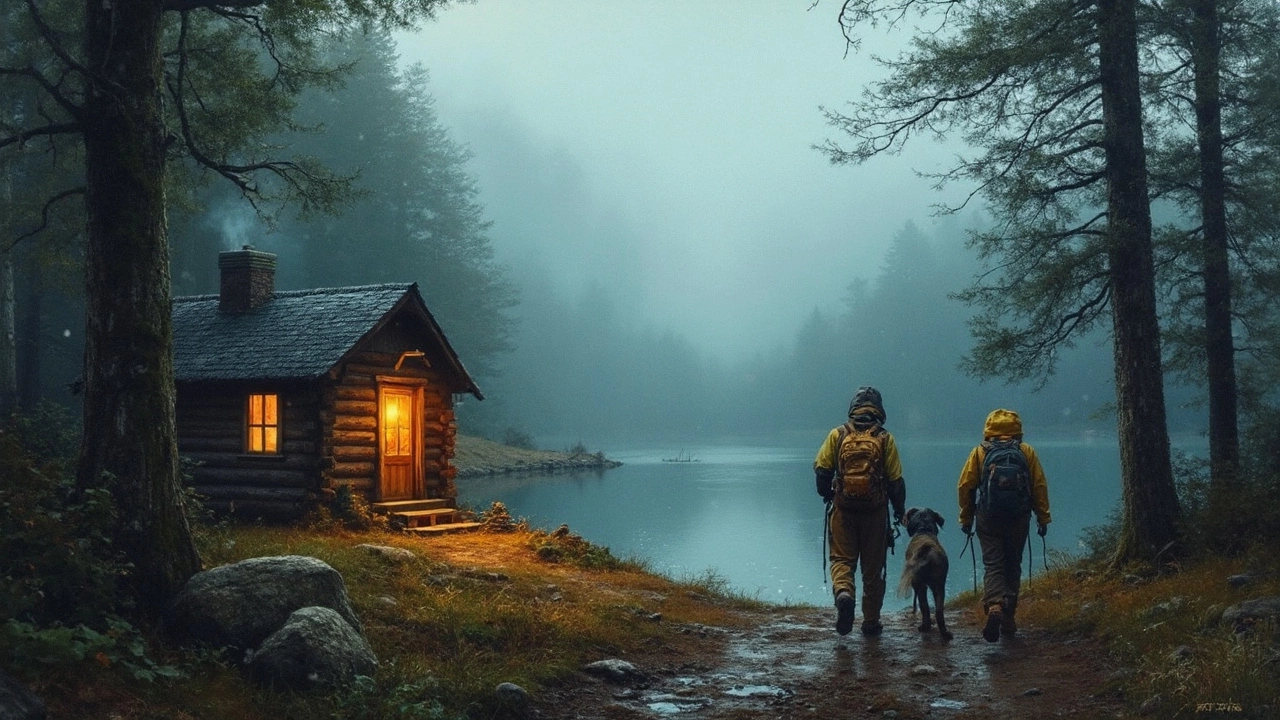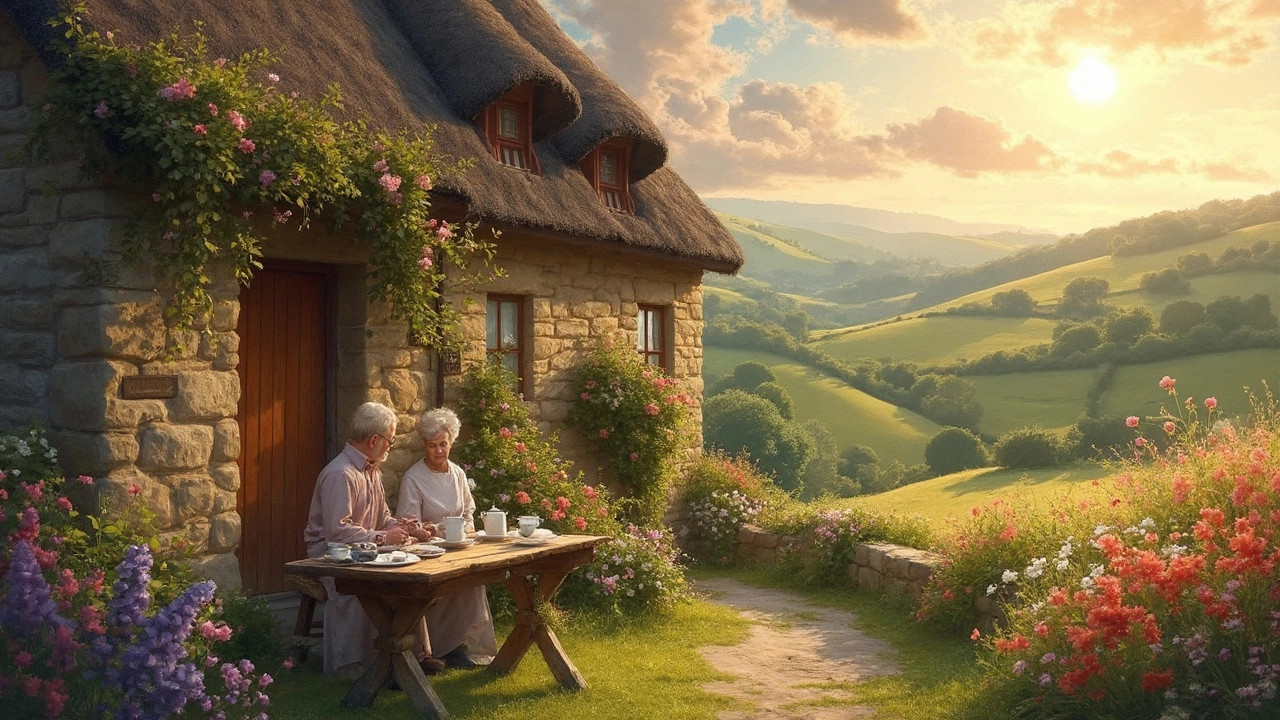Every time someone talks about escaping the daily grind, the debate flares up—cottage or cabin? People have strong feelings about which is better. Ask around Devonport, or anywhere across New Zealand, and you'll hear about the charm of timber-framed cottages next to the wild comfort of rustic cabins. The thing is, there’s a real difference between the two, not just in looks but in the way they shape your experience. So which gives you the dream setting? If you think it’s just about looks, you’re missing half the story.
What Makes a Cottage, and What Makes a Cabin?
The cottage is the old soul here. Think whitewashed walls, gardens bursting with daisies, and windows letting in soft, filtered light. This is the place for quiet Sunday mornings, a cup of tea, and knitted throws. The classic definition? Small, cozy, and often set in a charming landscape—maybe a meadow on Auckland’s edges or tucked into the countryside by Lake Taupo. Cottages have British roots, made famous in New Zealand through those magical Hobbiton hills, but also visible in our baches by the beach.
What sets a cottage apart is the sense of story. There’s this feeling the walls have absorbed centuries of family laughter. Look for stone chimneys, pitched roofs, even thatched in the boldest cases. Interiors tend to exude warmth—wooden beams, patchwork cushions, and bookshelves groaning under novels and old board games. If you want to feel utterly at home, a cottage wraps its arms around you.
Now cabins. If the cottage is an old soul, the cabin’s a wild heart. Cabins feel like they sprang up from the land—rough-hewn timber, wide decks, and usually sitting among trees or near rivers. They run the spectrum from minimal, almost primitive ‘bush shacks’ to sleek, contemporary glass-walled escapes in places like the Kawakawa Valley. You’ll find fewer frills inside, but that’s the point. Cabins are about stripping things back, focusing on nature outside your window—a tui’s morning song, rain on a tin roof, fire crackling at night. They often use local materials, blending into the landscape instead of standing out.
Here’s the wild detail: In New Zealand, a ‘cabin’ is sometimes just one open space with bunks, a wood stove, and plenty of campfire stories. The luxury versions, though, can rival any boutique hotel, with eco-friendly touches and massive windows for stargazing.
So if you crave that classic, cozy aesthetic—go cottage. If adventure, simplicity, and raw connection to nature pull your heartstrings, try a cabin. But the lines blur more than you’d expect, especially here, where Kiwis love mixing the best ideas from both.
Lifestyle: Which Fits Your Rhythm?
Let’s talk real life. Living or holidaying in a cottage or cabin isn’t just a style choice—it changes how you spend your days. Cottages tend to create a chill, slow vibe. You’re more likely to find yourself gardening, reading on the porch, or baking scones. Morning coffee in a cottage just hits different, maybe because it feels like your grandmother’s house, only with better Wi-Fi. There’s a reason stories like Anne of Green Gables get set in cottages—they’re for dreaming and nesting.
Many people make cottages their family headquarters. Birthdays, holidays, and lazy afternoons start to follow a rhythm, and you end up with generations of memories layered in those spaces. They’re popular with people who want a break but don’t want to feel off-the-grid or give up comforts like heated bathroom floors or a real kitchen. In New Zealand, holiday cottages often blend old-world charm with modern touches, something you see all over Waiheke or the Bay of Islands.
Cabin living leans into freedom and the outdoors. You wake up early because there are birds going mad outside, but also because you want to catch the sunrise or hike before lunch. People in cabins cook outside, light bonfires, and sleep with windows open just to hear the bush. Because cabins can be so remote, there’s less Wi-Fi and more card games, less binge-watching and more marshmallow toasting.
If you want adrenaline, cabins usually win. You’ll hear people talk about spotting glowworms, mountain biking the Heaphy Track, or kayaking until dusk. Cabins also appeal to the do-it-yourself spirit—if something breaks, you fix it. Solar panels, compost toilets, and rainwater tanks are more common. This lifestyle suits anyone dreaming of a digital detox or hoping to teach the kids how to fish and light a fire (safely, of course).
If cottages persuade you to stay inside and get cozy, cabins drag you out into the world. There’s no one right answer; it’s about the pace that suits you. And honestly? You can always bring a soft wool blanket into the cabin—or hang a pair of muddy gumboots on the cottage porch.

Cost, Resale, and Building Realities
Money matters. People want to know: is it cheaper to buy or build a cottage or a cabin? There’s no single answer, but a few useful facts. A recent survey from the New Zealand Home Builders Federation in 2024 put the average small, basic cabin build at around NZD $140,000–$190,000. Cottages, because of their extra details—painted facades, larger kitchens, even that cottage-garden landscaping—run higher, often starting at NZD $200,000 and climbing much further if you want luxury finishes or are revamping something old.
Here’s a quick breakdown:
| Aspect | Cottage | Cabin |
|---|---|---|
| Average Build Cost (NZD, 2024) | $200k+ | $140k–$190k |
| Typical Size (sqm) | 50–120 | 20–60 |
| Heating/Fuel | Heat pump, woodburner | Wood stove, fireplace |
| Potential for Off-grid | Low–medium | High |
| Maintenance Needs | Higher (gardens, exteriors) | Lower |
| Resale Value | Steady, high demand | Growing, esp. eco cabins |
Location changes everything. Cabins deep in the bush or far from main roads usually cost less upfront but can cost more if you need to add access, solar power, or water systems. Cottages on a lake or within a cute coastal village typically fetch higher prices, and they draw in buyers faster if you ever want to sell.
Building laws matter too. Regional councils in NZ have rules. Small cabins under 30sqm might not even need building consent (the tiny house movement loves this). Cottages, with all their plumbing and wiring, almost always need full permits and inspections. Insulation requirements have tightened too—new cabins can’t be leaky shacks anymore, and new cottages benefit from double-glazed windows and energy-efficient heat sources.
Watch out for surprise costs. Older cottages often hide issues like damp, borer, or failing roofs—so set aside a chunk for repairs. Cabins, because they’re simple, don’t sting as hard with surprise bills, but remote sites wind up costing more for delivery and utility hook-ups. Financing is easier with cottages; banks know and love these structures. Getting a mortgage for a cabin, especially if it’s tiny or off-grid, takes more paperwork. Renting out your retreat? Cottages typically earn more on platforms like Bookabach and Airbnb, especially during school holidays.
Which Should You Choose? Tips for Decision-Making
Now to the guts of it. Should you pick Team Cottage or Team Cabin? Only you (and maybe your family dog) know what hits the sweet spot. Here are some questions and real tips that might help nudge your decision one way or the other:
- cottage lovers usually crave tradition and comfort—is that you? Do you want stained-glass windows, roses over the door, and a kitchen you’d welcome your gran into?
- If you care about location, remember this: Cottages cluster near villages, farms, or beaches. Cabins often hide in forests, up mountain tracks, or right beside rivers, away from everything.
- If you hate maintenance, cabins are usually easier—less garden, fewer upgrades, and cleaning’s a breeze. Cottages demand regular painting and gardening but look stunning if you love weekend projects.
- Love tech-free weekends? Cabins are great for digital detoxes. But if you want Netflix beside a roaring fire, go cottage (though you can always cheat and add satellite to your cabin).
- Think resale: In NZ, cottages keep strong interest, especially vintage ones in key locations. Eco cabins, especially well-designed new builds, have grown 25% in demand over the last 5 years according to CoreLogic NZ’s 2023 market survey. Both offer solid options, especially when well-maintained.
- Plan your activities: Beachy? Cottages shine near the sand. Hunting, tramping, or fishing? Cabins, hands down.
- If you want to future-proof, both styles adapt well to sustainability tweaks—solar panels, rainwater tanks, big vege gardens.
Still stuck? Try this trick: Spend a night in one of each. Plenty of holiday parks and glamping operators around New Zealand let you ‘try before you buy’ a lifestyle, so you’ll quickly discover whether you crave wild silence or quaint comfort.
Both cabins and cottages promise a change of pace, a space to write a novel or raise a toast as the sun goes down. Just listen to what tugs at you—a wild track through the bush, or roses blooming round the porch? Either way, you’re winning.
